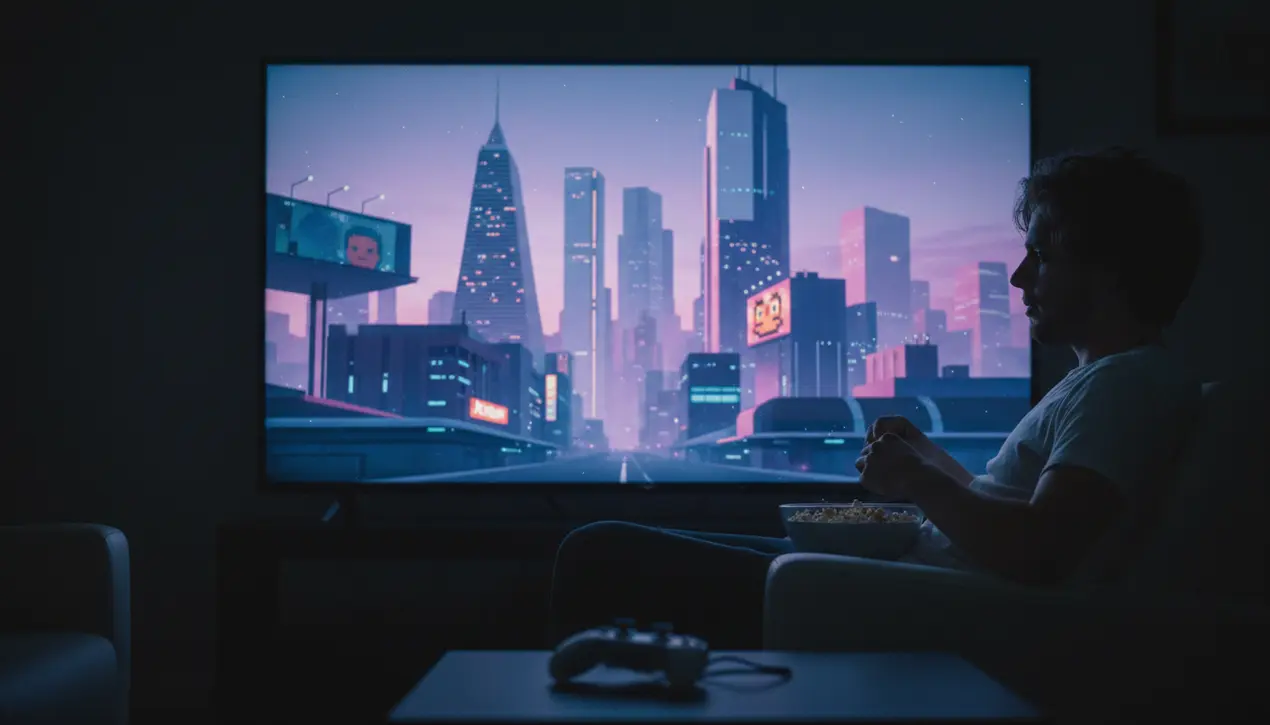
Entertainmenttv & streamingSeries Premieres
The Easter Eggs Hidden in Roku City Screensaver
CH
Chris Walker
3 hours ago7 min read
Alright, squad, let's dive into the main menu of one of the most viewed yet underrated digital landscapes out there: Roku City. You know the vibe.You’ve paused your stream to grab some snacks, and suddenly your screen transforms into this hypnotic, endlessly scrolling metropolis. It’s the default screensaver, the digital wallpaper for millions of Roku users, but what if I told you it’s also one of the most cleverly designed Easter egg hunts this side of a retro platformer? This isn't just a random cityscape; it's a meticulously crafted world, a love letter to pop culture and internet lore that rewards the idle observer.Think of it like an open-world game where the core gameplay loop is simply… waiting. The first time I noticed something was up was during a late-night gaming session.My controller died, and as I sat there, the city just kept rolling. Then I saw it—a building that looked suspiciously like the towering, neo-gothic architecture from 'Blade Runner.' It wasn't a coincidence. The developers have packed this digital skyline with nods to everything from classic films and video games to memes that once dominated our timelines.It’s the equivalent of finding a secret room in an old-school RPG, a little dopamine hit for just paying attention. This practice of hiding secrets in plain sight isn't new, of course.Gaming culture is built on it. From the infamous 'Konami Code' that granted 30 lives in Contra to the meticulously hidden eggs in Grand Theft Auto, developers have long used these hidden gems to build community and reward dedicated fans.Roku City operates on the same principle, but for a passive, always-on medium. It turns a functional piece of software—a simple screensaver meant to prevent burn-in—into an engaging piece of interactive art.It’s a brilliant move in user experience design. By embedding these cultural touchstones, Roku transforms a moment of inactivity into a potential moment of discovery.You're not just looking at a blank screen; you're on a sightseeing tour. You might spot a billboard referencing a cult classic TV show, or a shopfront named after an inside joke from a popular podcast.It’s a constant, low-stakes scavenger hunt that fosters a sense of shared knowledge and community among users who ‘get it. ’ This strategy is a masterclass in building brand loyalty without being intrusive.Unlike a traditional ad, these Easter eggs don’t break immersion; they enhance it. They make the user feel smart and observant, creating a positive emotional connection to the Roku brand that goes far beyond its function as a streaming device.It’s the same psychology that makes exploring the map in a game like Elden Ring so compelling—the environment itself tells a story. For the content creators and streamers among us, it’s a reminder of the power of environmental storytelling.Your backdrop, your loading screen, your AFK screen—they’re all real estate for building a world and engaging your audience on a deeper level. Roku City proves that even in our most passive moments, there’s an opportunity for a little magic, a hidden quest waiting to be found if you’re just willing to stop and look around.So next time your Roku goes idle, don’t just grab your phone. Take a sec, lean in, and see what secrets you can spot. It’s the most chill treasure hunt you’ll ever experience.
#featured
#Roku
#screensaver
#Easter eggs
#streaming
#technology
#hidden features
Stay Informed. Act Smarter.
Get weekly highlights, major headlines, and expert insights — then put your knowledge to work in our live prediction markets.
Related News
Comments
Loading comments...
© 2025 Outpoll Service LTD. All rights reserved.